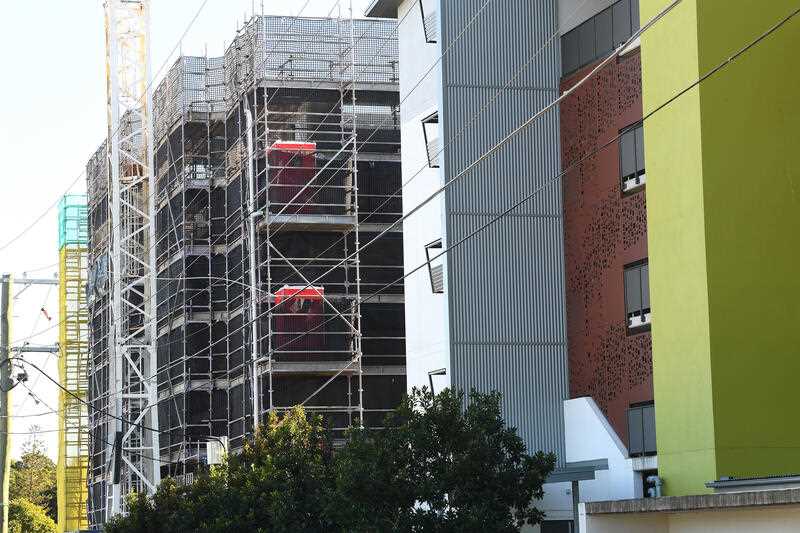New large-scale apartment projects drove an uptick in dwelling approvals in the final month of 2022.
The data set from the Australian Bureau of Statistics rose 18.5 per cent in December, driven by major apartment developments that are notoriously volatile.
ABS head of construction statistics Daniel Rossi said approvals for private sector dwellings excluding houses were up 56.6 per cent.
“The result was driven by a number of large apartment developments approved in NSW and Victoria,” he said.
But approvals for houses continue to decline, sinking 2.3 per cent across the month, with weakening property prices and high building costs weighing on home-building demand.
A total of 188,896 dwellings were approved last year.
BIS Oxford Economics head of property and building forecasting Timothy Hibbert said dwelling approvals were down 17.2 per cent on the year prior.
“Much of this step back reflected the pass-through of HomeBuilder (a government grant scheme) but interest rate rises and cost escalation have also impacted in more recent months,” he said.
Mr Hibbert said approvals across all dwelling types would continue to trend downwards.
“The headwinds of rising interest rates, delays, capacity constraints, higher construction costs and weakening house prices are firmly dragging on new home demand and this is set to persist in 2023, with approvals geared to take a further step down,” he said.
But Master Builders Australia deputy chief executive officer Shaun Schmitke said the elevated December reading signalled the early stages of recovery.
“Higher density home building approvals are particularly sensitive to interest rate movements and have been on the way down over most of 2022 until a sharp jump in December,” he said.
“The stronger performance of medium and high-density homes is welcome and we hope this will be sustained as renters are crying out for more new apartments and units.”
Troubling economic conditions have also been weighing on business confidence and conditions.
Business conditions as sampled in NAB’s quarterly business survey dropped five points in the December quarter but remained in positive territory at +18 index points.
Trading conditions, profitability and employment all declined but remained elevated based on historical averages.
Confidence fell sharply in the three months to December as economic concerns intensified, sinking nine points to -1 index point.
NAB chief economist Alan Oster said leading indicators remained in reasonable shape despite the sharp fall in confidence.
“Expected conditions over the coming months have fallen somewhat but remain at strong levels and forward orders were around long-run average levels in the fourth quarter,” he said.
“That supports our view that, while the economy will likely soften considerably in 2023, at the moment firms don’t see a major slowdown.”
By Poppy Johnston in Canberra



